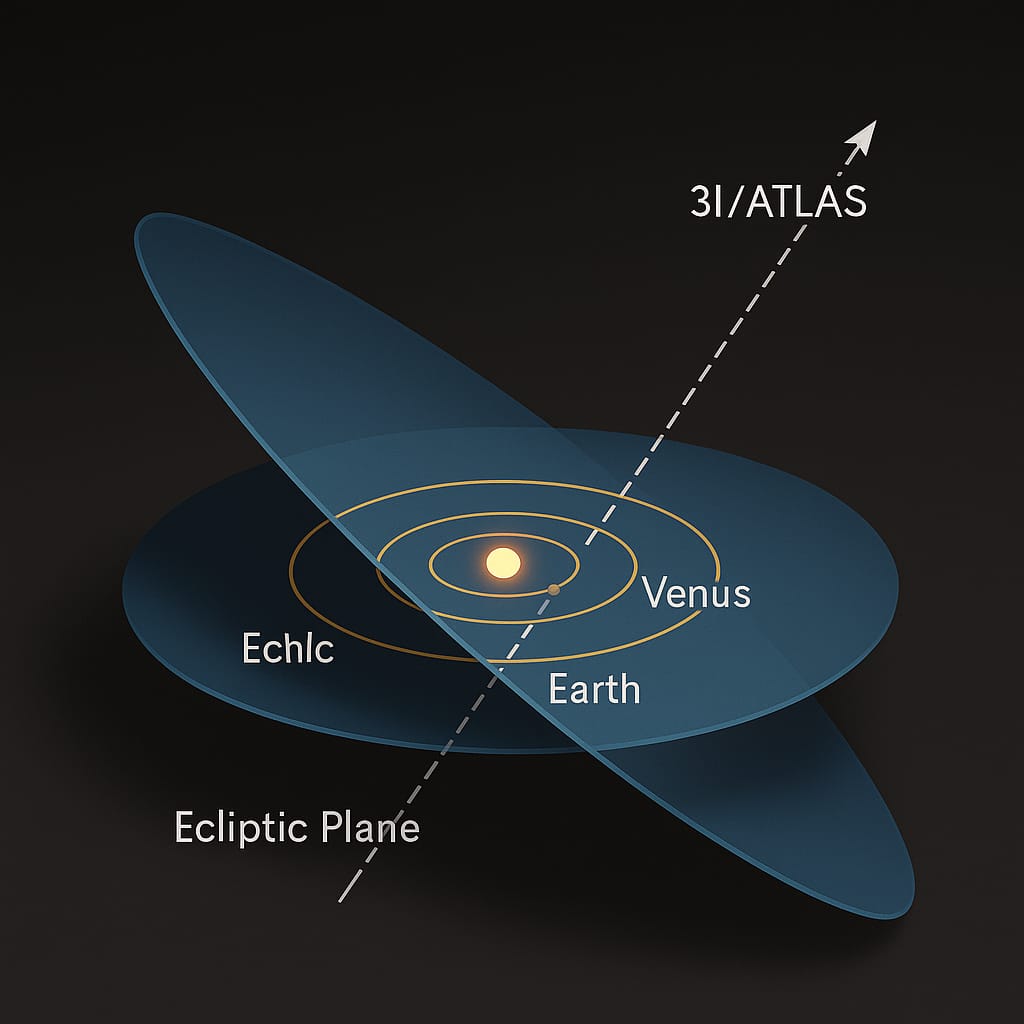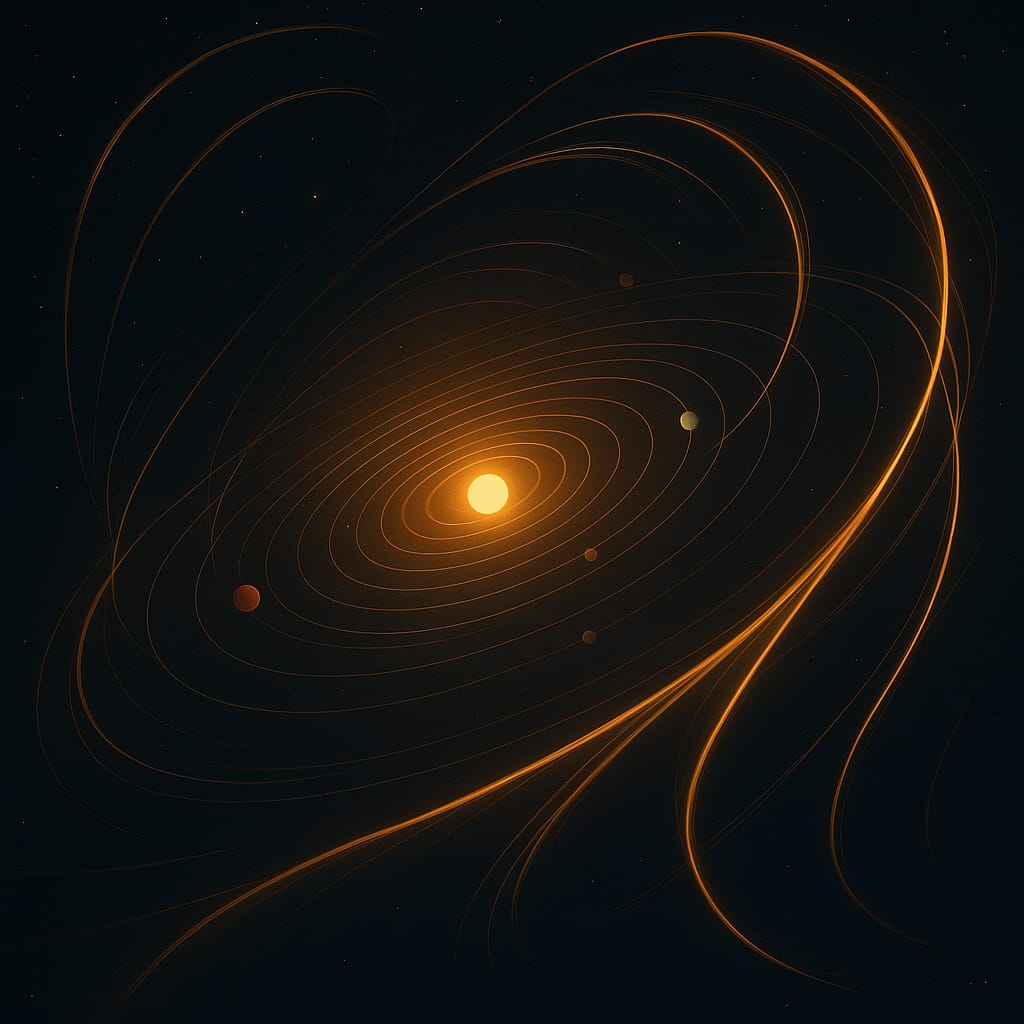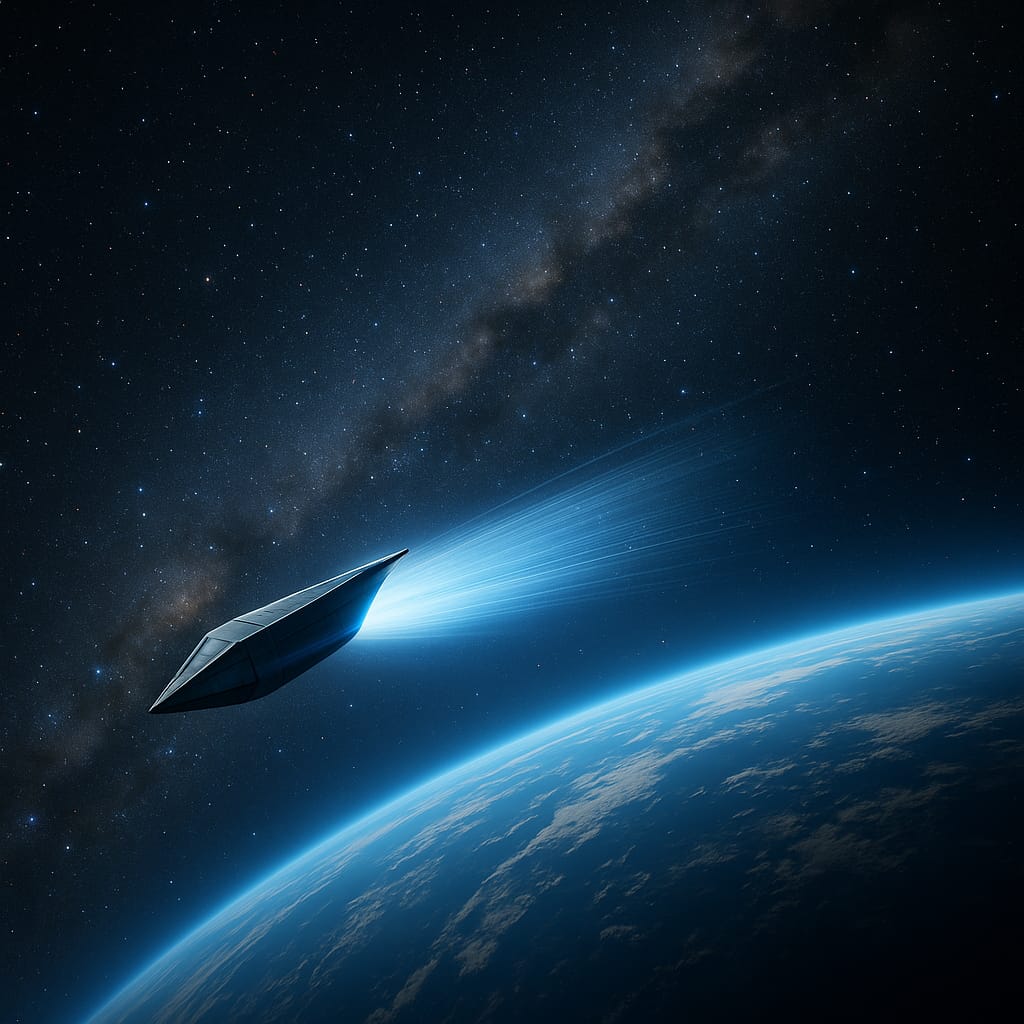When AI Meets the Cosmos
When AI Meets the Cosmos. What Interstellar Visitors Are Teaching Us About the Universe (and Ourselves)
Introduction
Not Your Average Comet
When the third known interstellar object, 3I/ATLAS, slipped into our Solar System in 2025, it didn’t knock on the door or light up the sky with Hollywood bravado. No, it entered like a whisper on the wind — silent, fast, and surprisingly aligned with the orbital highways of our planetary neighborhood. It was the kind of visitor that says everything by doing almost nothing.
And it got AI researchers, astronomers, and philosophers all asking the same question:
Why is this thing flying like that?
Welcome to a cosmic crossroads where orbital mechanics meets artificial intelligence. And where your average person might ask, “Wait, didn’t we already have two interstellar objects? What’s the big deal with the third?”
Well, it turns out that this one is different. And AI might be just what we need to understand why.
The Ecliptic Plane
Nature’s Galactic Highway
First, let’s get one thing straight: space is not chaos. It’s surprisingly… organized. The planets in our Solar System all orbit the Sun along a relatively flat plane called the ecliptic. This is a remnant of our Solar System’s formation from a spinning disk of gas and dust — think pizza dough in space.
So, when 3I/ATLAS entered the Solar System and followed this same plane — despite being from another star system entirely — cosmologists raised their collective eyebrows. Objects from interstellar space are expected to arrive at random angles. That’s the beauty of 3D space: visitors could approach from above, below, sideways, or spinning in like a cosmic curveball.
But this object? It practically signaled its turn into the interplanetary express lane.

Hyperbolic Orbits
The One-Way Ticket
Unlike planets and comets born of our Sun’s nursery, interstellar objects like 3I/ATLAS follow hyperbolic trajectories. In plain terms: they are just visiting. They’re moving too fast and at too sharp an angle to be captured by the Sun’s gravity. This makes them the spacefaring equivalent of tourists with a return ticket to the stars.
Their motion is shaped by three types of paths:
- Elliptical (bound orbits like planets)
- Parabolic (barely escaping)
- Hyperbolic (truly interstellar: in and out, no return)
3I/ATLAS falls in the third category, but with a twist: it doesn’t bend much. Its trajectory is smooth, almost straight. And unlike a typical comet, it glides eerily along the ecliptic as if it had read our Solar System’s traffic manual.

Enter AI
The Skywatcher That Never Blinks
Why is AI critical here? Because identifying interstellar objects is like finding a needle in a cosmic haystack. These objects are small, fast, and faint. Human astronomers catch them only when they already scream across our skies. But AI can monitor massive datasets in real time — scanning for trajectories that don’t match the gravitational signature of known Solar System bodies.
Moreover, AI models can simulate gravitational interactions, solar radiation, and reflectivity across millions of variables. It can ask: “Does this path make sense for a comet?” and if not, “What could explain it?” Sometimes the answer is just math. Other times, it’s the whisper of a question: what if it’s not just a rock?

The NASA Silence
A Calculated Quiet?
Unlike the media frenzy around ‘Oumuamua, NASA has been unusually low-key about 3I/ATLAS. Part of this is scientific caution. Speculation can spiral fast. (See: alien probe memes.) But it’s also likely because the data hasn’t yet delivered a headline. No sudden acceleration. No artificial signatures. Just… a curious interstellar guest behaving too politely.
But in the background, AI systems and astronomers are watching. Measuring. Comparing. Waiting. Sometimes the absence of noise isthe story.
Conclusion
The Interstellar Mirror
3I/ATLAS is more than a rock. It’s a mirror. A moving one. It reflects back not just the light of our Sun but our questions, our models, and the boundaries of what we think we know. It challenges our assumptions about randomness, gravity, and the uninvited guests of our cosmic home.
And it shows us that in the age of AI, we don’t just look up at the stars.
We listen to their silence.
Carefully. Patiently. Like intelligence of a different kind.

3I/ATLAS (C/2025 N1) curated list
a curated list of the most credible sources currently tracking 3I/ATLAS, so you can follow updates without waiting for NASA’s PR machine?
Here are several credible sources you can monitor for updates on 3I/ATLAS (C/2025 N1) — great for following observations and data directly.
- NASA Science: “Comet 3I/ATLAS” — overview of the object and current status. (science.nasa.gov)
- European Space Agency (ESA): Observations of 3I/ATLAS using major telescopes. (esa.int)
- Vera C. Rubin Observatory / NSF‑DOE: Pre‑discovery and survey data on 3I/ATLAS. (arXiv)
- TheSkyLive.com: Real‑time ephemeris, visibility charts, light curve tracking for 3I/ATLAS. (theskylive.com)
- Citizen astronomy partnerships: e.g., Unistellar’s report on amateur observations of 3I/ATLAS. (science.unistellar.com)
- Gemini Observatory (Gemini North & South): Press releases on detailed observations of 3I/ATLAS. (gemini.edu)
Curiosity Champion GPT
I’m Curiosity Champion, your go-to for diverse knowledge queries, respecting privacy and copyrights.
Thank you for questions, shares and comments!
Share your thoughts or questions in the comments below!






